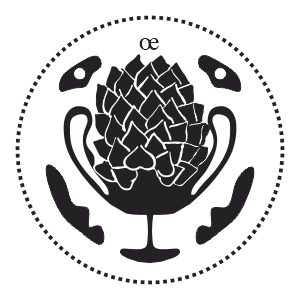The 15th issue of the architectural research journal ArchiDOCT has been published, exploring the theme of ‘Variability’ and guest-edited by Dimitris Gourdoukis. The issue features essays by Constantinos Miltiadis, Chrissa Papasarantou, Ioannis Mirtsopoulos and Corentin Fivet, Sergio Garcia-Gasco Lominchar and Olympia Ardavani along with a ‘good practice example’ essay by Dimitris Gourdoukis. All the articles can be accessed here.
The 15th issue ArchiDoctaddresses the concept of variability; a concept that is closely related to those of difference and change. While constant change is a persistent characteristic of current societies and cultures, it is by no means a property that we first encounter in the 21st century. Already since the 1960s theories of difference – more often than not within a post-structuralist framework – started to emerge and shifted our focus from the concept of ‘being’ towards that of ‘becoming’. The modern idea of certainty, supported by all kinds of standards, was juxtaposed with postmodern processes of fluidity and constant transformation.
However, it was indeed the 21st century and the almost total dominance of digital media that – at least on the surface – brought those ideas into everyday practice. Architecture of course is also affect by that process. One can therefore initially identify three main concepts in relation to the production of architectural form within the context of the fluidity described above.
The first is that of the Variable: Architectural form is produced through the manipulation of variables. Specific properties are identified and then varied in order for different results to arise. The second is Variation: architectural form is produced through constant transformation of an initial form, generating this way an extended family of forms. Variation can be smooth or uneven. The third concept if that of Variety: Architectural form is produced having in mind the generation of different spatial conditions. The architect envisions specific situations and manipulates form in order to accommodate them.
All those three modes of operation however, when used separately, function as a repetition of different, existing modes of architectural production. Variations echo ideas of typology where specific characteristics are (pre)defined and the new is created through their alteration. Variables advocate a more scientific approach where architecture is understood as a more or less objective field and can be analyzed accordingly. They result in situations where form is produced within a very limited range of predefined solutions. Varieties represent the idea of the architect as an auteur, where his mastery allow him to generate form and authorize it at the same time.
Variability on the other hand – while closely related to all three, both etymologically and conceptually – implies a slightly different property: that of the possibility to be different in an unpredictable way. More specifically, it represents the claim to difference and change through almost illogical and definitely difficult to control actions. While a property that in many cases was typically undesirable – precisely because of its unpredictability – variability might be the key to a new approach to the production of architectural form. One that combines the properties of Variations, Variables and Varieties and moves beyond the standards and the uniformity ultimately imposed by digital technologies though them.
The 15th issue of ArchDOCT therefore, features essays that examine the concepts of change and difference in all three initial versions of Varia-; and most importantly in their combination in variability.

